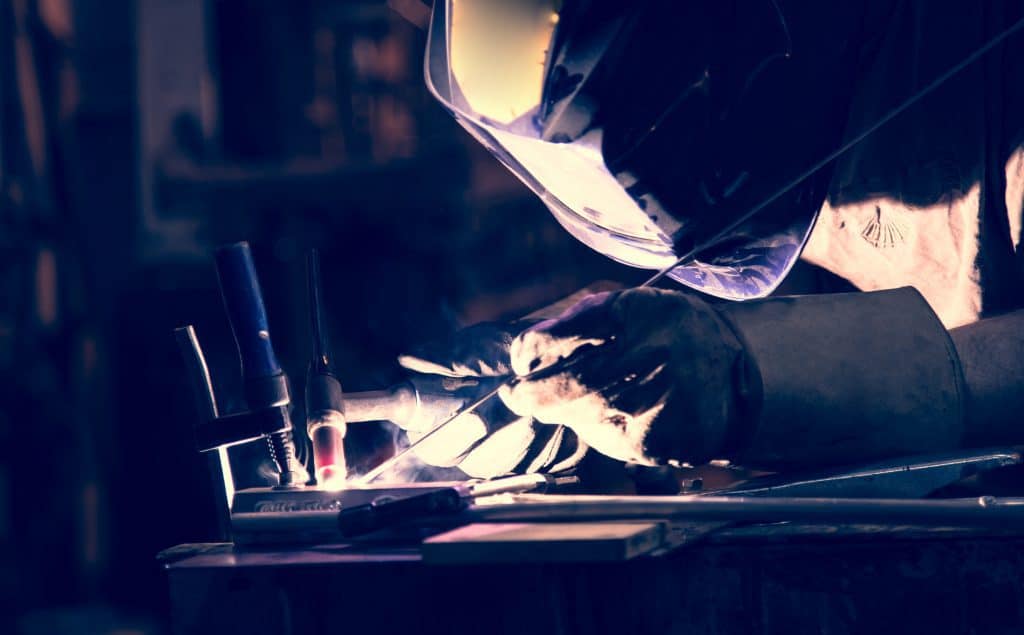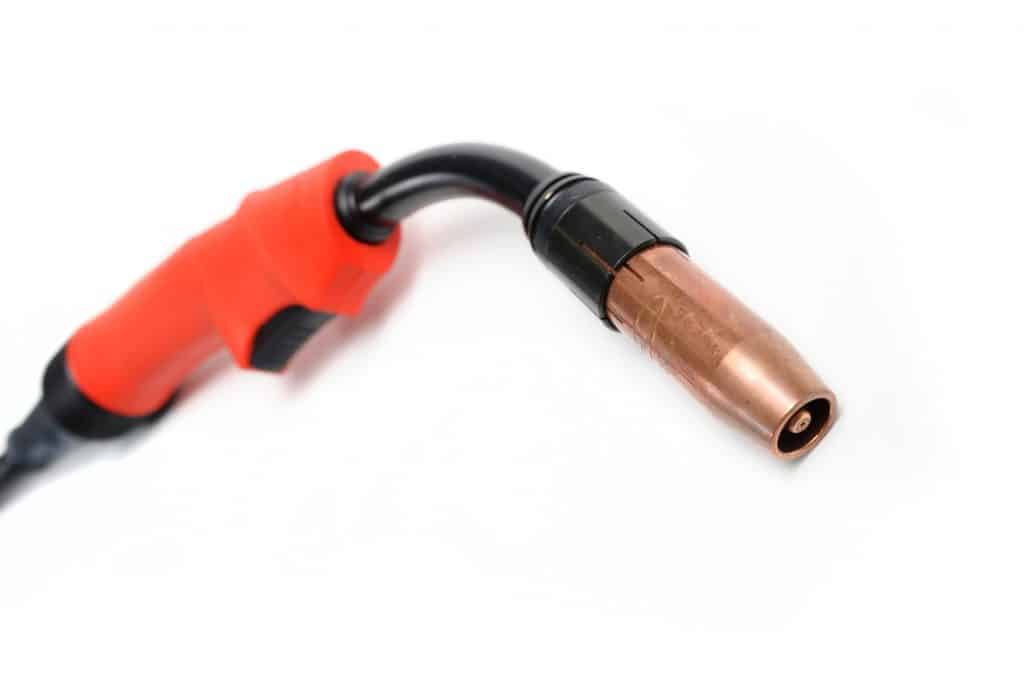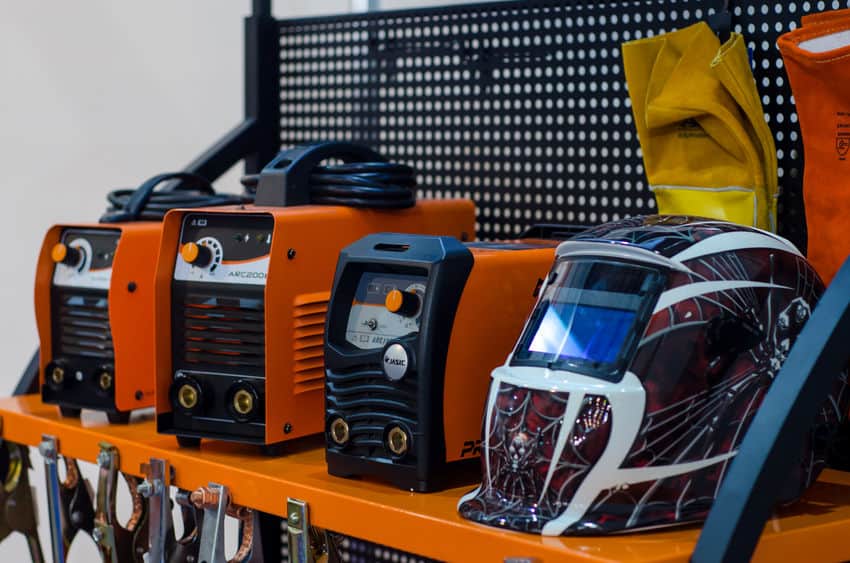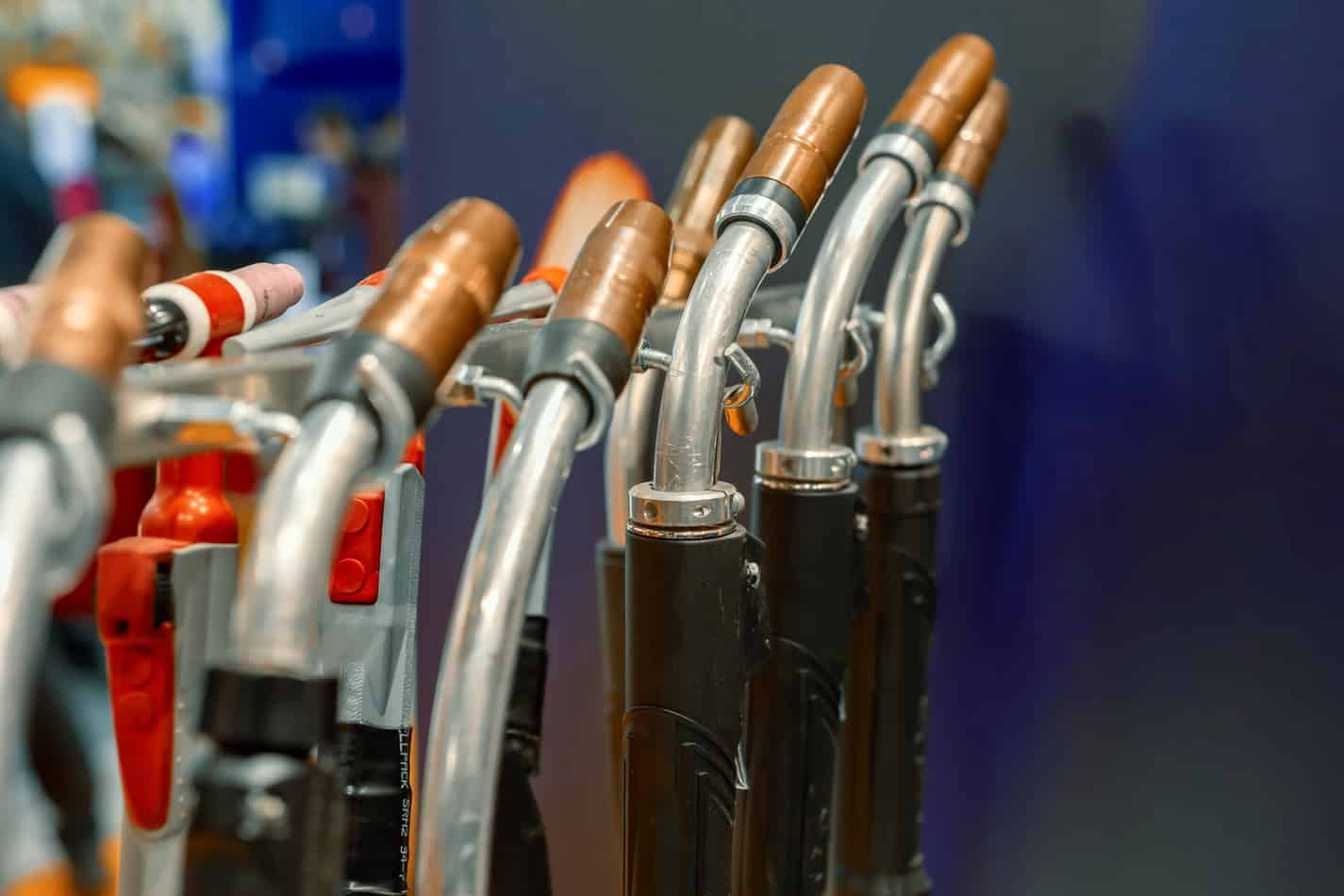“This post contains affiliate links, and I will be compensated if you make a purchase after clicking on my links.”
Welding is a trade that requires no college degree but pays better than many jobs that do. Essentially, there are two methods that a welder must master in order to establish himself in the field – TIG and MIG welding.
So, should you learn TIG or MIG welding first? You should learn MIG welding before learning TIG welding. It’s easier to learn, more forgiving of mistakes, and is more often the more appropriate technique in job situations.
Today, we’ll be exploring both methods of welding, as well as why MIG welding is easier to learn, and so on.
MIG Welding
MIG Welding stands for metal inert gas welding. With this process, the welder feeds metal wire into the hot electric arc that forms between it and the metal being joined. The gas doesn’t feed or stimulate the arc but protects it from airborne contaminants like oxygen and water vapor.
As the metal wire melts, the molten extract fills the joint between the working metals and adds strength and mass to the joint. If the inert gas does not adequately protect the arc from contaminants, the weld becomes porous, or the molten metal spatters into tiny disconnected lumps on the working metal. In either case, the quality of the weld is compromised.
MIG welding, also known as GTAW (Gas Tungsten Arc Welding) is the technique of choice when joining thick metal objects, because of the extra mass added by the filler material.
TIG Welding
TIG welding stands for tungsten inert gas welding. Typically, no filler material is added with this process, but it sometimes is, depending on the application.
With TIG welding, a tungsten electrode is used to apply current through the metals being joined so that they become hot enough to melt at the point of juncture. The intermingling of the molten metal forms a bond that is nearly as strong as the metals themselves. Another name for this process is GTAW (Gas Tungsten Arc Welding).
TIG welding is more appropriate for joining thin pieces of metal, where a cleaner look is needed. It’s also easier to heat more delicate pieces of metal to the proper temperature.
It’s generally more challenging to master for many beginning welders.
Advantages of MIG welding
There are quite a few advantages to MIG welding. Some of these include:
Joins a Wide Range of Metals & Thicknesses
This wide range of metals can include:
- steel
- stainless steel
- copper, aluminum
- bronze
- various alloys
Creates a Solid Weld Bead
This is important when inspecting metal joints for structural integrity. It’s something that can readily be seen and felt.
Minimum of Splatter
The inert gas keeps contaminants out of the way, so they don’t cause the arc to sputter and throw droplets of molten metal in a sloppy pattern. This is unsightly and adds no strength to the weld.
Easy to Learn
Newcomers to the trade and DIY-ers can get the hang of MIG welding reasonably quickly. Plus, welds that perhaps look a little off-center may be strong enough to do the task at hand. (Those wishing to advance in the trade professionally should, of course, desire to improve steadily in their technique and leave neat-looking work.)
Advantages of TIG welding

There are also advantages to TIG welding, as well. These are:
Precise welds
Some situations call for very small and precise welds, where tight tolerances are demanded proper fit and function.
Pure welds
The joining of two pieces of metals is accomplished by the molten state of the two pieces, not a filler material. Once the heat is removed from the weld, the cooling metals essentially create a new piece of metal permanently imbedded in the joint.
TIG welding would be the universally preferred welding technique for all welds if not for the difficulty in heating the joining metals – especially thick and dense metals – to a temperature hot enough to induce melting.
Choosing the right technique for the situation
There are some jobs where it’s a toss-up between the two methods, and either one could be employed effectively by a skilled and experienced welder. But for the most part, these considerations should always factor in:
Thickness of the Metal
The metal used in MIG is typically thicker than that used in TIG welding. This is important to know, as understanding the thickness of the metal you are using is quite important.
Conductivity
Junior high science classes teach students about the variations in electrical conductivity among metals. Silver, copper, and gold are highly conductive, which makes them good metals for electric circuitry, but they would be difficult to weld because there are little resistance and little friction to generate heat.
Steel and iron offer more resistance and heat up quicker. So when joining highly-conductive metals, the TIG process would probably be a challenge not worth the result.
Dissimilar Metals
For the most part, attempting to join different types of metal with a welding process is a bad idea. However, there are situations where it must be done, and in those situations, MIG welding is the better choice because of the filler material that is created.
Appearance
Professional-looking work projects are the life and blood of tradesmen. Where welds are visible, neatness is essential. Here, the skill of the welder comes into play. If he or she employs the MIG technique, proper use of the inert shielding gas is critical to avoid spatter and streaks on the surface.
Most often, the TIG technique would be a better choice, but the welder must have a strong command of the process, and the metals must be appropriate for the technique.
MIG welding equipment

The key tool in the MIG process is the welding gun/wire feed unit. This multi-functional device extends the metal wire through the electric conduit and emits gas into the joint, creating a white-hot arc that melts the metal wire and super-heats the joining metals. The molten metal attaches itself to both pieces of work metal and cools to form a solid bead of metal – if all goes well.
The feed rate is generally consistent but doesn’t necessarily have to be. The wire is a metallic alloy wire that heats – and melts – rapidly, and whose properties are compatible with the metals being joined.
The voltage employed to create the arc is variable according to the amount of heat needed and the length of the arc. The shorter the arc, the higher the heat, but that may not always be the ideal state for welding. The required skill level ramps up with high heat processes.
The shielding gas is not always the same. Many factors go into the selection of the right gas. For most applications, argon is mixed with other gases to create the ideal shield for the types of metals being joined. Likewise, the rate of gas flow depends on the metals and the environment surrounding the work.
TIG welding equipment

The TIG welding torch uses a tungsten electrode, which generates an enormous amount of heat that can melt more conductive metals, but the electrode itself maintains its state. The electrode and the work area can be cooled – by air in low-current applications, by water in high-current applications.
Ports around the electrode’s tip deliver shielding gas, and the nozzle can be adjusted to provide the proper coverage and diminish as much as possible the turbulence created by the escaping gas.
As with the MIG system, the voltage is constant (even more so than with MIG) to aid in precise applications.
Why a tungsten electrode?
Tungsten has the highest melting temperature among pure metals and is the best choice for the high-heat realm of TIG welding.
Tungsten’s properties were first recognized in the late 19th century and exploited by inventor Thomas Alva Edison, who used it in his research for the incandescent light bulb. While he was never able to develop a tungsten light bulb, his company – General Electric did, in 1906.





1 thought on “Should you learn TIG or MIG welding first? How to decide”